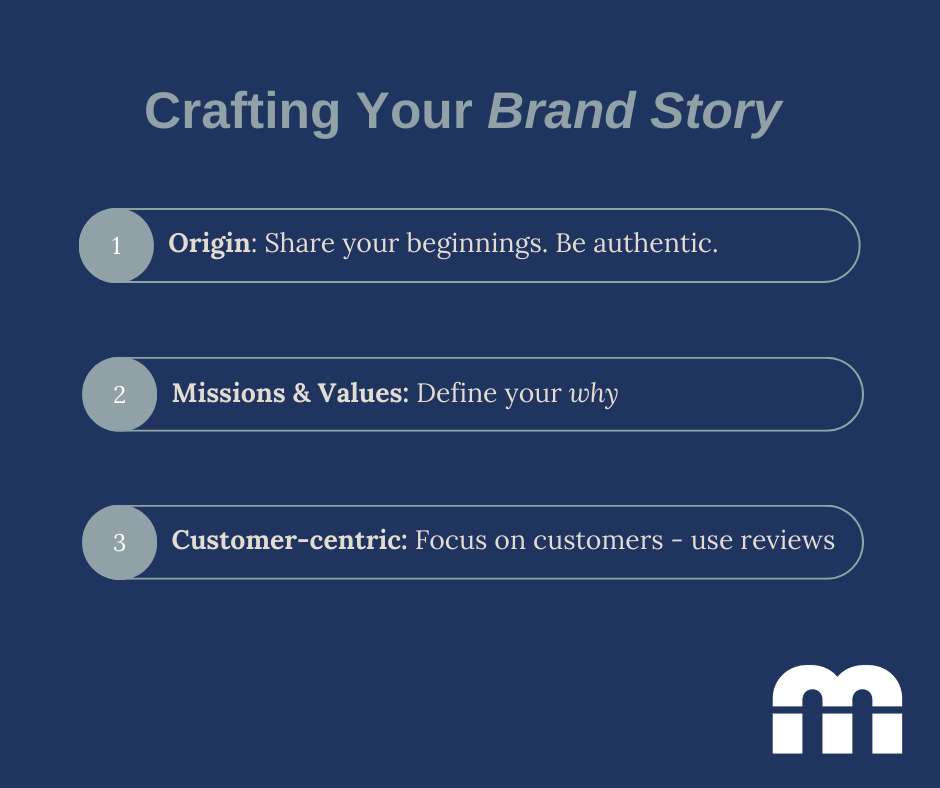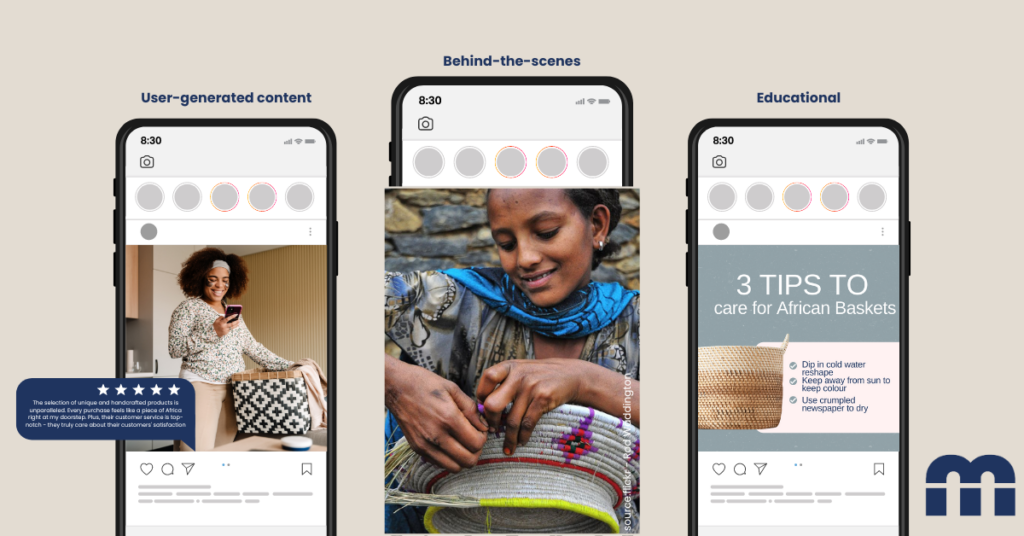
In today’s global marketplace, where consumers are increasingly seeking culture-rich, meaningful products that tell stories of heritage, craftsmanship, and sustainability, it’s essential for businesses creating and selling African handicrafts to stand out.
One way to do this is through creative storytelling. By sharing the stories behind these beautiful works of art, entrepreneurs can connect intimately with their customers and build loyalty and lasting relationships.
However, sometimes storytelling can feel intimidating. Even more intimidating is the vast range of social tools and the changing nature of the media through which these stories must be told.
The Impact of Storytelling
Julie Lokun, in her Entrepreneur.com article, highlights the multiple benefits of storytelling for entrepreneurs. It creates genuine audience connections by sharing relatable experiences, which builds trust and empathy. Storytelling serves as a powerful communication tool, simplifying complex ideas through anecdotes and metaphors. It enhances brand memorability and can set brands apart by emphasising uniqueness. Furthermore, it plays a vital role in establishing thought leadership by offering valuable insights and attracting dedicated, loyal customers.
Crafting Your Brand Story
Start with your brand’s foundation – your story. If you know it well, think of the various ways of re-telling your brand story. Otherwise, it is best to get a refresher and review whether you’ve communicated all these elements. Your story is what makes you different from competitors and goes beyond the products you offer. Focus on these aspects:
- Origins: Share how your business began – a personal passion, family legacy, or response to market need. Be authentic.
- Missions and Values: Define core values and your mission, and reveal a purpose beyond profit. Highlight commitment to ethics, sustainability and artisan welfare.
- Customer-centric: Draw attention to how your business focuses on customer needs. Use testimonials and success stories to illustrate your impact.

Authoring a Compelling Story
1. Be personal and engaging
There are several ways to ensure that your storytelling is memorable.
Be personal, authentic, and engaging. Share your personal growth story and how you have developed your products. Invite your suppliers and workers (staff) to share their stories too. Tell the world about your culture and community and how it has inspired you to make your products. This will help to portray you as an open and inclusive entrepreneur.
Make sure that your stories are lively and interesting. You should also aim to be brief (succinct) with your posts. Short-form video works better on social while longer docu-stories work better on blogs.
You should explore different media from time to time. Make use of video, pictures, or words. Occasionally share someone’s post if it is relevant to your audience. Show your face once in a while. Yes, we love to see the person behind a wonderful product or service. It helps build trust.
The bottom line is that your content should have your customers in mind. Even your personal story should be relatable to your audience.
2. Storytelling platforms
Know where your customers, potential clients, and key stakeholders congregate. If they are corporate, then you are likely to find them on professional platforms like LinkedIn. If your customers are individuals, then Facebook and Instagram will be your likely destinations.
If you are new to social media, it is best to choose a single platform to work on. Maybe two. But the last thing you want to do is stretch yourself thin over multiple platforms. It will keep you busy and could distract you. No two platforms are the same, and content needs to be developed to suit each.
The most important platform you should own is a website. This will be the central repository of all your storytelling and marketing efforts. Because you own the platform, you have total control of it, unlike social media which can change at any time (look at the current upheaval of X, formally known as Twitter). A website also allows you to have a blog where you and your staff members can author articles. It also helps you build an email list which is a superb way of connecting with your customers with customised offers.
3. Collaboration
Collaborations can be a lifesaver, especially where you lack the skills or confidence to create content on your own. It is, however, important to make sure that you collaborate with other brands that speak the same language as you do. The brands should be complementary to you and not ones that will damage your brand or compete with you. You can also decide to work with your national tourism board.
You can choose to work with digitally savvy creatives like photographers or content creatives. This would be an agreement where they get paid in cash or in kind. You could also work with a creative family member.
It could be beneficial to team up with other stakeholders, like your banker, to create a short video – you tell your story and your banker tells theirs. They most likely have a creative team that develops content for them. This would be a win for both you and them.
Whoever it is you decide to work with, try to create as much content as possible preferably in different formats – video, photographs, client or supplier testimonials, etc. This will allow you to use this information over a long period and on different platforms. Your video shoot today on YouTube can be a blog article tomorrow and a Reel on Instagram the next day.
4. Tools
There are plenty of tools, paid and free, that one can use to develop social media content
Use free tools like Snapseed or Photoshop Express to enhance your pictures. The apps allow you to correct overly exposed or dark pictures, straighten slanting pictures, or resize pictures to fit certain platforms like Instagram.
You can use Canva to create adverts, invitation cards, WhatsApp stories or presentations. This is another free online tool, with a paid option, that allows you to use your own media or free media in the app. The simple drag-and-drop interface makes it very intuitive.
To create short social media videos, you can use Inshot on your phone. You can add music and other effects to your videos. You can even piece together a series of pictures into a video.
Buffer or Meta Business Suite are online tools to help you schedule posts for your social media platforms. X (Twitter) also allows you to schedule posts. You can batch content for the next week or more and these apps will do the job of posting at the time you have set them to.
5. Go for it!
Storytelling is a powerful tool for entrepreneurs to promote their African handicrafts. By sharing the stories behind their businesses and products, these businesses not only thrive in the marketplace but also contribute to the preservation and celebration of African culture and traditions.
Tips to start storytelling today:
Visuals: Invest in high-quality images and videos. Showcase your products in various contexts, demonstrating their value and versatility.
User-Generated Content: Encourage customers to share their experiences with your products. Repost their content, acknowledging their loyalty and creating a sense of community.
Behind-the-Scenes: Offer glimpses into your daily operations, introducing your team and sharing your business’s story in a relatable manner.
Educational Content: Share tips, tutorials, and how-to guides related to your products. Position your brand as an expert in your field.
Engage and Respond: Don’t just broadcast; actively engage with your audience. Respond to comments, ask questions, and participate in conversations related to your industry.

Blog collaboration with Zidza Katenga of Meekono for their clients who are African women handicraft entrepreneurs. To find out more about our co-author, please visit Meekono‘s website.
